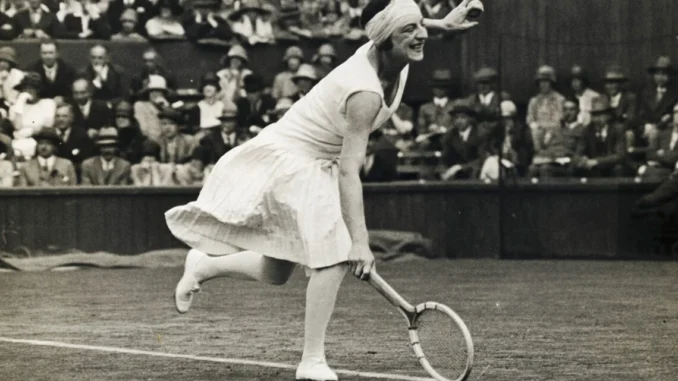
Meet the Woman Who Made History with the Fastest Grand Slam Final — A 23-Minute Wimbledon Masterclass…Read More…
In the long and storied history of tennis, Grand Slam finals have often been epic showdowns — grueling battles of skill, endurance, and mental toughness that can stretch over hours and captivate millions around the world. Yet, in a twist that stunned both fans and experts alike, one woman rewrote the script at Wimbledon by clinching the title in a jaw-dropping 23 minutes — setting a record for the fastest Grand Slam final ever played.
This historic feat belongs to Suzanne Lenglen, the French tennis legend who, nearly a century ago, not only dominated her era but also left an indelible mark on the sport with her style, grace, and sheer competitive fire. The year was 1922 when Lenglen faced Molla Mallory, an accomplished player in her own right, in the Wimbledon women’s singles final. What was expected to be a classic duel turned into a one-woman show of utter domination.
In a match that defied all expectations, Lenglen dismantled Mallory with surgical precision, finishing the final with a staggering 6-2, 6-0 victory in just 23 minutes of play. The spectators at the All England Club were left in awe — some even wondering if the match clock was accurate. But the numbers didn’t lie. Suzanne Lenglen had delivered a performance for the ages.
A Display of Unmatched Brilliance
Lenglen’s victory was not just about the speed but also the brilliance she exhibited on the court. Known for her impeccable footwork, devastating forehand, and an uncanny ability to read her opponents, she played a near-perfect match that day. Every stroke she executed seemed effortless, every point was calculated, and Mallory found herself outclassed at every turn.
What made this feat even more remarkable was the context. Grand Slam finals are typically high-pressure affairs where even the best players often tighten up. But for Lenglen, the final was an exhibition of confidence and calm — a showcase of why she was known as “La Divine” (The Divine One) in her homeland.
Breaking Barriers Beyond the Court
Suzanne Lenglen’s impact transcended the white lines of the tennis court. She was a trailblazer for women in sports, breaking away from the strict Victorian norms of the early 20th century. At a time when female athletes were expected to remain demure and restrained, Lenglen stormed onto the court in knee-length skirts and sleeveless blouses — attire considered scandalous back then — revolutionizing women’s tennis fashion and paving the way for future generations.
Her flamboyant personality, bold fashion sense, and fierce competitiveness turned her into a global superstar, a rare phenomenon for a female athlete of her time. She brought glamour to the sport and helped elevate tennis into the mainstream consciousness, drawing record crowds and immense media attention wherever she played.
A Legacy Sealed in Wimbledon’s History
Though Lenglen’s 23-minute final remains an unmatched record, her entire career was decorated with unparalleled success. She won six Wimbledon singles titles and was unbeaten in singles matches at the tournament. Her dominance was so absolute that many opponents dreaded facing her on any surface.
Even today, Wimbledon’s annals list Lenglen’s 1922 final as one of the most remarkable displays of dominance in tennis history. It stands as a reminder of her extraordinary talent and the era she defined. While modern tennis stars like Serena Williams, Steffi Graf, and Martina Navratilova have written their own chapters of greatness, none have matched the sheer brevity of Lenglen’s 23-minute masterclass in a Grand Slam final.
Inspiration for Future Generations
Lenglen’s story continues to inspire young athletes, particularly female players who see in her an example of fearlessness, grace, and uncompromising excellence. The International Tennis Federation’s Suzanne Lenglen Cup, awarded at the French Open, serves as a lasting tribute to her contributions to the sport.
Her life, though cut short by leukemia at age 39, remains a beacon in sports history. Tennis historians often debate whether anyone will ever replicate her record-setting final, but most agree that what Lenglen achieved on that historic Wimbledon afternoon was the perfect storm of talent, confidence, and opportunity.
The Day the Clock Stopped for Tennis
The tale of Suzanne Lenglen’s 23-minute Wimbledon final isn’t just about a match; it’s about a moment when time itself seemed to bow to brilliance. It’s a story that still echoes on the grass courts of Wimbledon — a testament to a woman who played the game faster, bolder, and better than anyone before or since in a Grand Slam final.
In a sport where every second counts, Suzanne Lenglen made every moment matter — and in just 23 minutes, she made history.
Leave a Reply